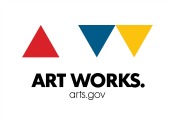Detroit’s growth and development into one of the nation’s leading metropolitan regions is undeniably linked to the river that shares its name. The Dossin Great Lakes Museum’s core exhibition Built by the River highlights ways that Detroiters have long used the river and lakes around us to build our industries, engage our neighbors, and pursue our recreational passions.
The exhibition traces hundreds of years of Great Lakes maritime history, with an emphasis on the development of Southeastern Michigan. As the “City on the Straits,” Detroit's social, economic, and ecological development was undeniably impacted by its river.




